New Puppy Checklist: 32 Puppy Must-Haves Every Dog Parent Needs to Buy
This post shows you everything you need on your New Puppy Checklist.
Congratulations, new puppy parents! You’re about to experience one of the biggest and most joyful changes in your life.
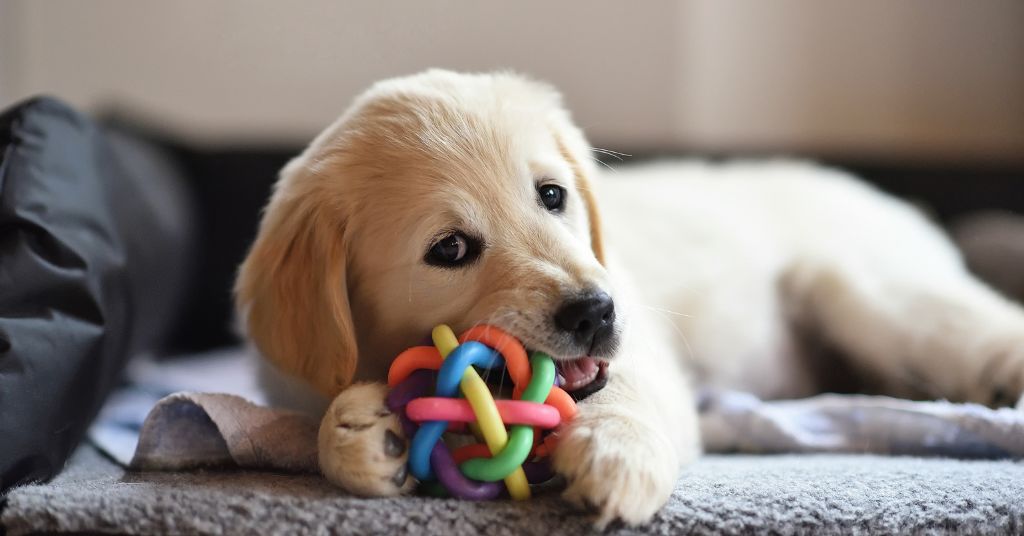
- New Puppy Shopping Essentials – Food Edition
- 1 New Puppy Food Shopping List
- 2 New Puppy Shopping List for Sweet Dreams
- 3 Potty Training Time
- 4 Going Out Puppy Outdoor Checklist
- 5 Vet & Medical & ID Puppy Essentials
- 6 New Puppy Toys Checklist
- 7 Treats for Your New Puppy
- 8 New Puppy Beauty and Grooming Essentials
- New Puppy Shopping Checklist
Welcome, little puppy!
I can imagine how excited (and maybe a bit overwhelmed) you feel, especially when it comes to figuring out what to buy, how to stick to a budget, and how to choose the best products without going overboard.
No worries. Dog Inspector is here to help. We’ve been through it all ourselves and have helped countless other dog parents get settled.
Since we’re all about mindful consumption and try to avoid filling our homes with unnecessary plastic or stuff we’ll regret buying, this new puppy checklist is perfect for eco-conscious, practical dog parents. If you’re happy to invest in a few high-quality essentials but want to avoid the clutter, you’re in the right place.
New Puppy Shopping Essentials – Food Edition
Your puppy needs food, water, sleep, shelter, and to learn how to pee and poop outside instead of on your rug.
That’s it. That’s the foundation.
Now, when it comes to food shopping for your new pup, you might be wondering where to start. Don’t worry, I’ve got you covered. I’m a certified dog nutritionist and have attended several seminars on dog food and puppy nutrition over the past few years, so I can truly help.
The short version? Puppies need high-quality dog kibble. If you’re planning to raw feed, that’s totally fine too, but I personally don’t recommend it, and I can’t provide advice here.
But even if you decide to follow the raw food trend, having a protein-rich, high-quality kibble designed for puppies is essential.
1 New Puppy Food Shopping List
- High-quality dog kibble that supports growth, development, and digestion.
- Ceramic food bowls (get at least two so you can wash them often). Stainless steel bowls are also a good option. You just really want to avoid plastic ones. I prefer ceramic machine-washable food bowls. My dog has three, and we bought them 9 years ago!
- Water bowls (made of durable materials like glass, ceramics, or stainless steel).
- As they grow, you can get them slow feeders and licki mats, but for a new puppy, these are not essential.
What To Look For When Choosing Puppy Kibble
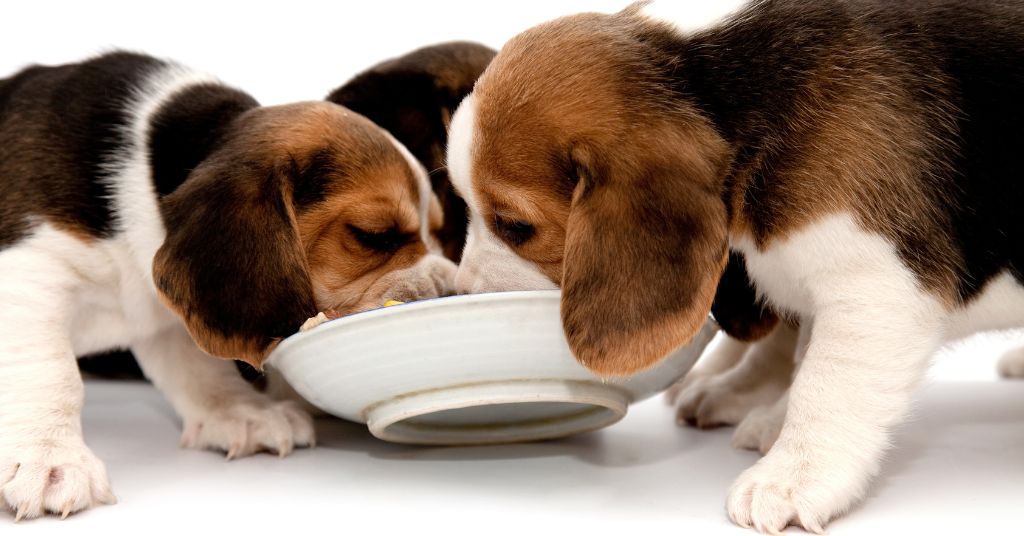
- Make sure the food meets AAFCO standards – This is super important. Look for the statement that says the kibble is formulated to meet AAFCO nutritional levels for puppies or all life stages. That means it has the basic nutrients your puppy actually needs to grow and stay healthy.
- Protein should always come first on the ingredient list – Ingredients are listed by weight, so if the first one isn’t a named meat like chicken, turkey, or salmon, that’s a red flag. You want real animal protein at the top. No mystery “meat meals” or low-quality fillers sneaking in.
- Avoid foods where corn or wheat gluten are listed first – It’s okay if they’re in the mix, but you don’t want those taking up all the space that should be used for meat and fat. Puppy food should be about nutrition, not stuffing them full of fillers.
- Puppies need a lot of protein – Adult dogs need around 18% protein, but puppies need at least 22.5%. If your puppy is super active or still growing fast, even more is better, as long as it’s coming from good sources!
- Don’t fear fat. It’s essential! – Fat isn’t just flavor. It gives your puppy energy, helps absorb vitamins, and keeps their coat shiny. Look for 5–20% fat, depending on your puppy’s age and size. Bonus points if the kibble has healthy fats like fish oil or chicken fat.
- Essential fatty acids are a big deal – Omega-3 and omega-6 fats support your puppy’s brain development, coat health, and immune system. You’ll usually see these listed as fish oil, flaxseed, or sometimes even chicken fat.
- Grain-free? Not unless your vet says so – Most puppies digest grains like rice and oats really well, up to 90%! There’s no need to avoid grains unless your vet tells you to. In fact, grain-free diets can sometimes do more harm than good if they’re not balanced properly.
- Check the label for puppy-specific formulas – Puppies, small breeds, and large breeds all have different needs. Make sure the kibble is labeled specifically for puppies or for “growth and reproduction” so you know it’s giving them what they need.
- A little fiber is good, but don’t overdo it – Some fiber helps with digestion and stool quality, especially if your puppy has tummy issues. Just make sure it’s coming from good sources like beet pulp or rice bran, not excessive filler.
- Stick with trusted brands – I always say this: go with brands that are transparent and have good quality control. It doesn’t have to be expensive, but it should be well-made.
If you’re feeling a bit lost and want to get deep into food and dog nutrition, I suggest you read my super simplified guide on dog food, where I teach how to decode the food labels and recognize high-quality kibble!
2 New Puppy Shopping List for Sweet Dreams
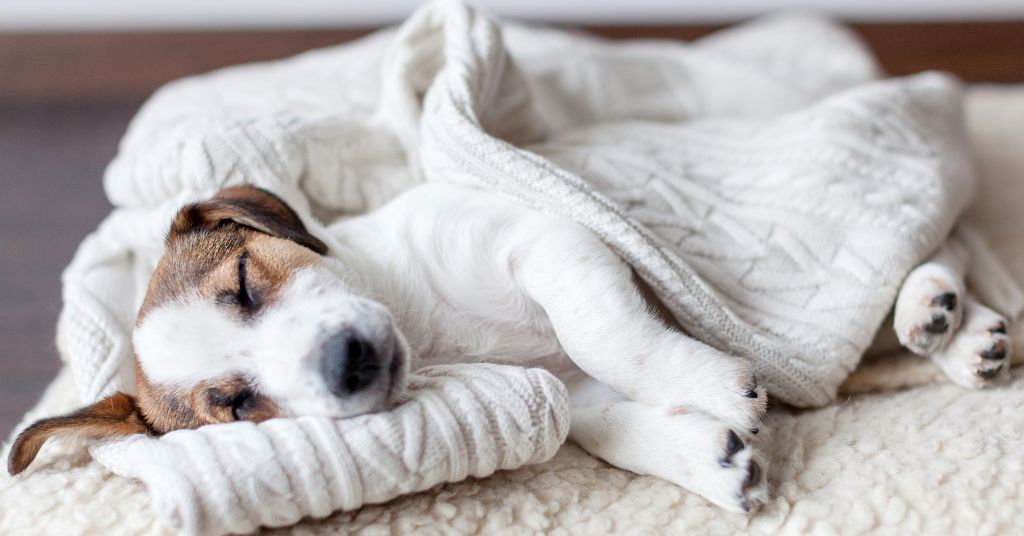
- Get a simple, soft, and cheap dog bed! Puppies are little devils, and they will chew and damage everything you get them when they go through the teething phase! You will need to upgrade to a larger bed anyway, so start with a budget-friendly dog bed. Whatever you buy, I suggest you make sure that the bed is machine washable.
- You can also consider getting a crate that you’re gonna use for training and sleeping. Place the bed in a crate or gated area that your dog is going to feel like their territory.
- If you don’t want to get a bed, or if it doesn’t fit your apartment, you can start with a small blanket that they can sleep on. Some dogs like to sleep on their blankets or on the floor near your bed. What’s good about blankets is that you can take them with you on your future road trips and vacations!
3 Potty Training Time
Ah, potty training! One of the biggest challenges for new dog parents. Make sure you read up on it, prepare yourself, and bring a lot of patience. It’s not always easy, but it’s totally worth it.
Once you get the hang of it, it actually feels pretty rewarding. Your puppy will learn how to communicate their needs, and you’ll start to understand their rhythm like a pro.
1 Pee Pads (Also Called Potty Pads)
These are your lifesavers in the early days. Puppy pee pads are absorbent mats designed to help you manage accidents indoors while you’re teaching your pup where to go. You can place them near the door (to eventually transition to going outside) or in a designated potty corner in your home.
Here’s how to use them effectively:
Some pads have built-in attractants to help your pup know where to go, and I recommend going with thicker, leak-proof pads that won’t soak through.
2 Yes, Pee Pads and Potty Pads Are the Same Thing
People use the terms interchangeably. And yes, your pup will likely do both pee and poop on them. The main idea is to give them a safe, easy-to-clean place to relieve themselves while you’re still working on getting them outside consistently.
Over time, you’ll reduce the number of pads or move them closer to the door to help your puppy transition to outdoor potty habits.
3 Crate Training Helps With Potty Training Too
A crate isn’t just for naps and sleeping; it’s also a powerful potty training tool. Dogs naturally avoid soiling their sleeping area, so the crate helps them learn to “hold it” until they’re taken outside or to their pee pad.
Here’s the connection:
The more consistent your schedule is, the quicker they’ll learn.
4 Poop Bags and When to Start Going Outside
As soon as your puppy has had their first round of vaccines and your vet gives the green light, you can start outdoor potty training. That’s when you’ll need poop bags, lots of them. Get biodegradable ones if you want to keep things eco-friendly.
Timing is everything when it comes to successful potty trips. Puppies usually need to go:
- Right after waking up
- About 10–15 minutes after eating
- After a good play session
- Before bedtime
At first, expect to take your puppy out every 2–3 hours, even during the night. Gradually, as they grow and their bladder control improves, you’ll be able to stretch that window.
By being consistent and watching for their cues (like sniffing or circling), you’ll start seeing results and fewer accidents fairly quickly.
4 Going Out Puppy Outdoor Checklist
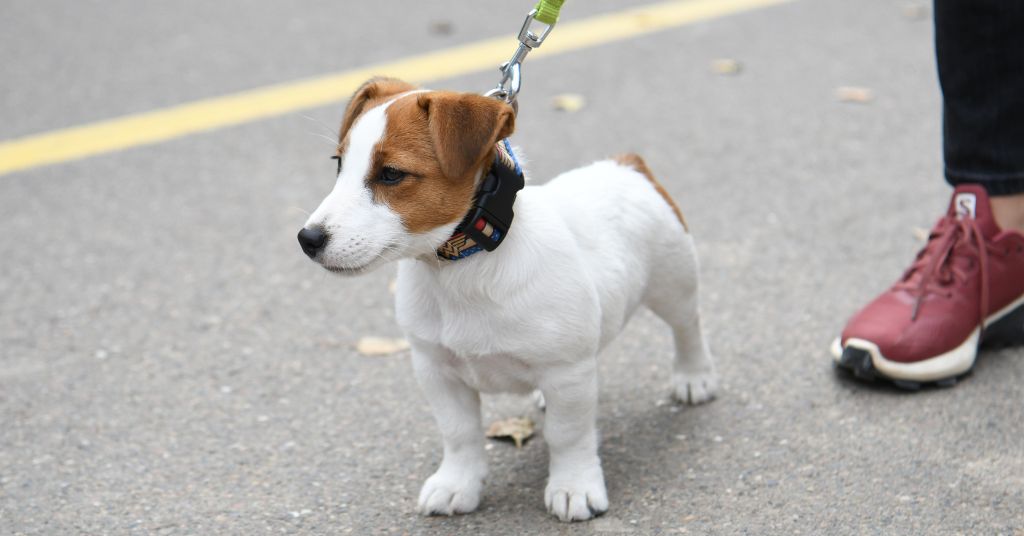
- You need a collar or a harness. If you have a smaller dog, I suggest you get a harness as it’s gentler and safer for puppies that pull a lot.
- Get a leash or a Flexi. I’ve been using a Flexi with my dog all my life, and we are super used to it.
- Remember to take your poop bags with you.
- If you’re gonna spend a lot of time outdoors, get a dog water bottle or a portable water bottle, so they always have access to fresh water.
5 Vet & Medical & ID Puppy Essentials
This is one of the most important parts, but I know you wanted to go through food, sleep, and walks first.
Once your puppy is with you, you need to schedule your vet visits and make sure you have all the documentation you need.
- Schedule your puppy’s first vet visit within a few days of bringing them home.
- Discuss vaccination and deworming schedules with your vet.
- Talk about microchipping (usually done at 8 weeks, so your dog may already come with a microchip. In that case, you need to change the owner information at your vet’s office.)
- Get your pup’s passport, medical ID, and documents in order.
- Get a secure ID tag with your contact info in case your puppy wanders off, and write your phone number on the label inside their harness or collar.
6 New Puppy Toys Checklist
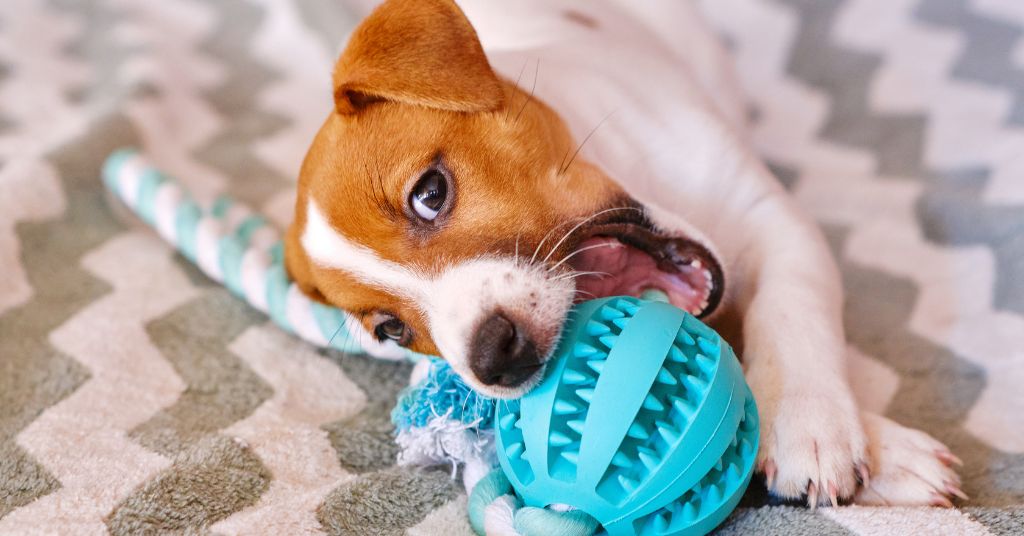
The best part about having a puppy, besides unconditional love and devotion, is shopping for new toys! If you live in an apartment building, make sure to get toys that won’t make your neighbors go crazy!
Some of the best toys for puppies are:
- Chew toys for teething are usually made of rope, rubber, and wood. They are great for their sharp little teeth.
- Rope toys, in general, are amazing for teething and great for playing with your dog, as they’ll want to play tug-of-war.
- Puzzle feeders are great for treats and reward time. They are super stimulating for small puppies, and I haven’t yet met a dog that doesn’t love them!
- We wouldn’t survive our puppy days with Ricco without a Kong. He was a picky eater, and we had to put kibble in the Kong to get him to eat. Then we started using Kong for playtime. You can fill it with feel-good and healthy foods that your puppy will adore!
7 Treats for Your New Puppy
You definitely need treats for your new puppy. To reward good behavior and new skills, and to simply give them something to look forward to!
- Get training-size treats for your puppy to avoid overfeeding.
- Use everyday treats and high-value treats for tricky stuff and major milestones (like going potty outside).
- Get chewable treats like bully sticks and chicken feet that will keep your dog entertained for a really long time.
- Explore dental treats that are good for their teeth and gums.
8 New Puppy Beauty and Grooming Essentials
- Your new puppy will need a good brush. Long-haired dogs need a really sturdy brush since they need regular grooming.
- They will also need a dog shampoo and maybe a conditioner.
- You can’t wash your dog with your regular shampoo, as they have delicate skin and can’t tolerate harsh chemicals.
- Get a toothbrush and dog-safe toothpaste and start building a routine when they are young!
You can get some extras, like a training clicker or a portable carrier, but I’m not sure you need them right away! Like I said, this blog post is only about new puppy essentials. As you get to know each other, you’ll figure out what they like, what they want, and what they actually need, and that’s when you can start adding more puppy stuff.
New Puppy Shopping Checklist
Food Essentials
1 High-quality puppy kibble
2 Ceramic food bowls (at least two)
3 Water bowls (glass, ceramic, or stainless steel)
Sleep Essentials
4 Simple, cheap dog bed (machine washable)
5 Crate for training and sleeping
6 Small blanket (alternative to a bed)
Potty Training Essentials
7 Pee pads (potty pads)
8 Poop bags (biodegradable preferred)
9 Crate for potty training
Going Out (Leash & Collar)
10 Collar or harness (harness preferred for smaller dogs)
11 Leash or Flexi
12 Dog water bottle or portable water bottle
Vet & Medical Essentials
13 Schedule first vet visit
14 Vaccination and deworming plan
15 Microchip registration or update
16 Puppy passport and medical documents
17 ID tag with contact info
18 Label the phone number inside the harness or collar
Toys
19 Chew toys for teething
20 Rope toys
21 Puzzle feeders
22 Kong
Treats
23 Training-size treats
24 Everyday treats
25 High-value milestone treats
26 Chewable treats (bully sticks, chicken feet)
27 Dental treats
Grooming Essentials
28 Brush (especially a sturdy brush for long hair)
29 Dog shampoo
30 Dog conditioner (optional)
31 Dog toothbrush
32 Dog-safe toothpaste
Is there something you think I should add to my list? Let me know in the comments!
Don’t forget to pin this post so you’ll always have this checklist handy!
Love, life, and fur forever!
This post showed you the New Puppy Checklist: 32 Puppy Must-Haves Every Dog Parent Needs to Buy.
You may also like: